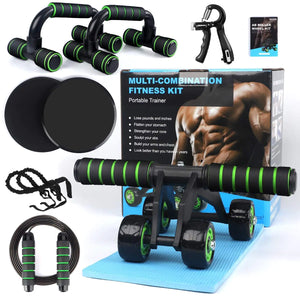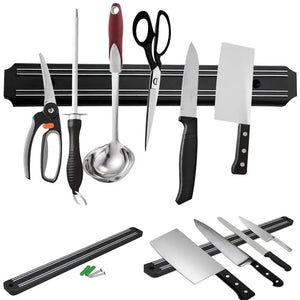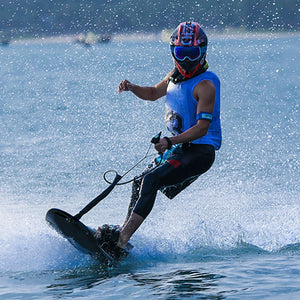
From rugged mountain passes to gentle meadows, the world offers an incredible variety of trails for every type of hiker.
Whether you are just starting out or have years of trekking experience, there’s no shortage of breathtaking views, wildlife encounters, and opportunities to connect with nature.
The staff at Nifty Cool Stuff – our online lifestyle store – believes the best part is that you don’t need to take on the most difficult trail to have an unforgettable adventure, choosing a path that matches your abilities is often the smarter, safer, and more rewarding choice.
Yet, it’s easy to overestimate what we can handle on the trail. Hiking may seem straightforward, but the terrain, elevation, weather, and weight of your pack can all add unexpected challenges. That’s why taking a few moments to honestly evaluate your experience, fitness, and comfort level is one of the most important steps you can take before setting out.

Ask Yourself the Right Questions
Before lacing up your boots, pause to consider:
- What’s my hiking experience? If it’s your first time, a short, flat, and well-marked trail is a great starting point. Seasoned hikers may want longer or more technical trails, but even then, conditions can make a familiar activity feel new.
- How much can I carry? A backpack with water, food, and safety gear can get heavy quickly. Know your limits before committing to a long trek.
- Am I physically prepared? Steep ascents and rocky descents demand more stamina than flat, paved paths. Be realistic about your current fitness level.

- What about the environment? Hiking in humid forests, arid deserts, or snowy alpine zones feels very different. If you’re visiting a park outside your usual climate, give yourself time to adjust.
- Can I handle higher elevations? Above 8,000 feet, oxygen levels drop enough to increase the risk of altitude illness. If you aren’t sure how your body will react, talk to your healthcare provider first.
- Am I going alone or with others? Hiking with a companion is safer, but if you prefer to go solo, you’ll need extra planning and backup strategies.
By reflecting on these questions, you’ll have a much clearer sense of which hikes are right for you.

Planning Ahead: Your Safety, Your Responsibility
Once you’ve chosen a trail, planning becomes your best tool for staying safe and making the most of your adventure. In fact, the National Park Service encourages hikers to view preparation as a key part of the experience. Here are essential steps to keep in mind:
- Pick the right trail. Match the hike to the abilities of everyone in your group. Check the park’s website or talk to a ranger for accurate descriptions of trail conditions and difficulty. Rangers can also provide insider tips on less crowded routes and must-see spots.
- Leave a trip plan. Tell a trusted friend or family member where you’re going, when you expect to return, and who’s with you. This information is vital if a search and rescue effort ever becomes necessary.

- Have an emergency plan. Even well-prepared hikers can face unexpected problems. Consider learning CPR or basic first aid. At the very least, talk through what you and your group would do if someone gets hurt or lost.
- Don’t rely on your phone. Many parks have little or no service. If you do carry a phone, keep it in airplane mode to save battery. For added safety, some hikers bring a personal locator beacon or satellite communicator.
- Stay weather-aware. Conditions can change rapidly in the outdoors. Always check the forecast before setting out, pack rain gear, and know the basics of handling lightning, flash floods, or sudden temperature drops.

- Prepare a backup plan. If the weather turns or a trail is closed, don’t force it. Parks are filled with alternative activities—from scenic drives to visitor center exhibits—that can still make your trip memorable.
- Check alerts. Before leaving, look for updates on trail closures, fire risks, or wildlife advisories on the park’s official site.
- Acclimate to altitude. If you’re hiking higher than you’re used to, give your body a chance to adapt. Rest, hydrate, and avoid pushing too hard during your first days at elevation.

The Trail Is Only Part of the Journey
One of the best things about hiking in national parks is that there’s no single “right” way to experience them.
Some visitors find joy in summiting peaks, while others prefer leisurely walks that allow more time for birdwatching or photography. By being honest about your abilities, preparing thoroughly, and respecting the power of nature, you’ll not only stay safe but also open yourself up to the kind of adventure that leaves lasting memories.

So, before your next trip, the staff at Nifty Cool Stuff advises you to remember this: the goal isn’t to conquer the hardest trail on the map. It’s to enjoy the journey, connect with the landscape, and return safely to share the story.
Feel free to check out the quality outdoor products in our Recreation section that could help to enhance your experience at any level. Give us a click and discover which of them would work for you!


















































